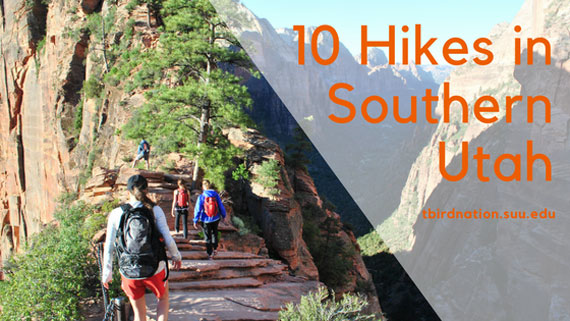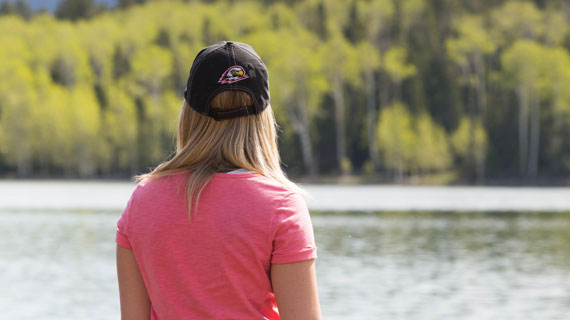11 Places to Go Stargazing in Southern Utah
Posted: August 30, 2018 | Author: Kenzie Lundberg | Read Time: 7 minutes
Home to nine certified International Dark Sky Parks and countless areas of natural darkness, Utah is quickly becoming one of the most popular states for night sky gazers. With some of the darkest skies in the country, Cedar City and the surrounding area offers plenty of opportunities to see and explore the night sky.
If you find yourself wondering where to go to get great pictures of astronomical objects, or to take pictures of the night sky, or just to gaze at the stars, here are 11 spots to find dark night skies in southern Utah. (Click link titles for directions)
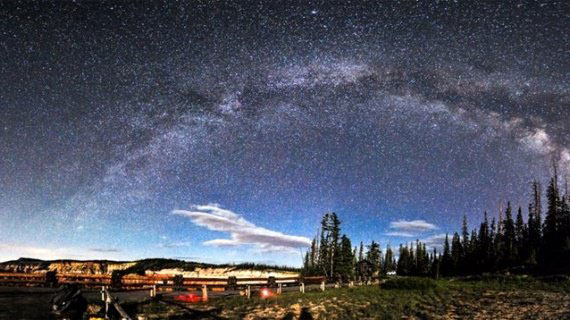
1. Cedar Breaks National Monument
Nestled on the edge of the Markagunt Plateau, this giant amphitheater (over 2,500 feet deep and more than three miles across) is breathtaking during the day, but wait until you see it at night. Just 25 minutes east of Cedar City, Cedar Breaks National Monument towers above 10,000 feet and the higher altitude allows for unbelievably clear views of the night sky.
Officially designated an International Dark Sky Park in 2017, Cedar Breaks National Monument is situated in one of the largest regions of remaining natural darkness in the lower 48 U.S. states.
To celebrate the night sky, Cedar Breaks hosts a series of Star Parties at Point Supreme Saturday nights beginning in July and running through Labor Day weekend. Star Parties are free and include constellation tours, unbeatable views through the park’s telescopes and on occasion, amazing moments like the Perseid meteor shower.
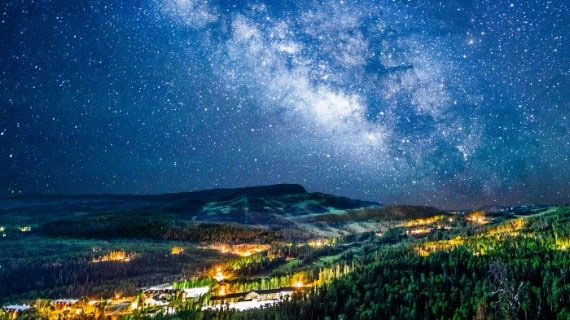
Because access to Cedar Breaks National Monument is limited in the winter, the park service teams up with Brian Head Resort to host a series of star parties during the winter season. These are ranger-led star parties that come with telescopes and enthusiastic dark sky astronomers.
Brian Head is the perfect spot for winter stargazing, it’s easily accessible, there are places to get warm, guides are available to show off the night sky and it’s just 45 minutes away. Just make sure you dress warm, temperatures can drop pretty low in the winter months.
In keeping with a long-standing tradition stemming from its opening in the early 1970s, the Ashcroft Observatory remains focused on community involvement and learning opportunities. Open every Monday night to all those interested in learning about constellations or viewing distant parts of the galaxy, visiting the Observatory is great for school groups, scout groups and families, but all are welcome and encouraged to enjoy the splendor in the skies.
Interested parties should plan on arriving at the observatory just as the sun sets. As weather or other conditions might alter this schedule, before driving out, please check the Ashcroft Observatory Facebook page to confirm they are open.
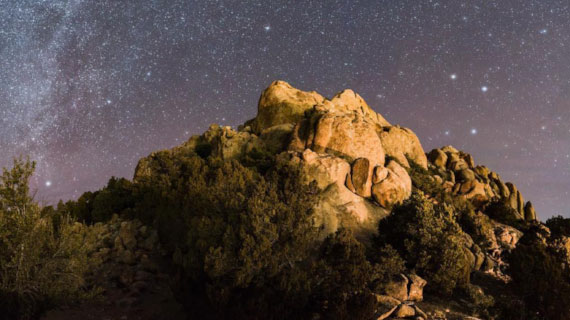
4. Three Peaks Recreation Area
The rolling hills and volcanic rock formations of Three Peaks Recreation Area provide a fantastic location for outdoor recreation. Only 11 miles from Cedar City, Three Peaks is the closest and most easily accessible area for dark sky friendly events. The area includes campsites, fire pits, tables for picnics, and outhouses. The only drawback, the area does not offer good shielding from the eastern sky, and most photography must be done straight up or towards the west.
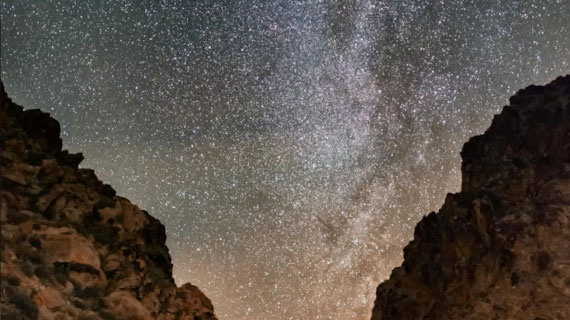
Known for the hundreds of American Indian rock carvings (petroglyphs) that are etched into its walls, Parowan Gap is a natural passageway that was once used as a major thoroughfare by ancient Native Americans. Beyond the rocks, Parowan Gap offers a dark area within 20 minutes of Cedar City that is perfect for stargazing.
If you are interested in more than dark skies, several interpretive programs and solar observation events take place at Parowan Gap throughout the year. These events happen in conjunction with the summer and winter solstices and spring and fall equinoxes and can be found on Visit Cedar City’s calendar of events.
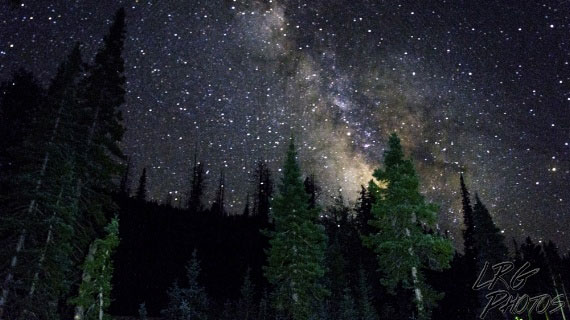
Formed when an ancient lava flow dammed the eastern side of the valley, Navajo Lake rests on a bed of limestone and drains through underground tunnels. Surrounded by Dixie National Forest, Navajo Lake is the perfect place for dark skies reflected in a forest lake.
Navajo Lake Campground, located on the shores of Navajo Lake, provides a spectacular setting for boating, camping, fishing, hiking, and the chance to stay overnight and watch the stars.
7. Kolob Canyons, Zion National Park
Kolob Canyons, the northwest corner and little known portion of Zion National Park, is home to rugged, red, Navajo sandstone canyons, just like the main park. Also home to diverse animal and plant life, Kolob Canyons is peaceful and serene.
Because of the surrounding hills and overall dark location, Kolob Canyons offers amazing views of the night sky and Milky Way. At the end of the Kolob Canyons Scenic Drive, the majestic red cliffs of Kolob shine even brighter at sunset. This is also a good place for viewing the stars--look eastward toward the cliffs for the darkest skies.
Many Zion National Park visitors like to stay for sunset, but for those few who stay later, or spend the night in one of the campgrounds, an entirely different and memorable Zion experience awaits: the dark night sky, filled with thousands of stars, above the jagged silhouette of cliffs.
Bryce Canyon National Park is the ultimate place to learn about the splendor of the night sky. Far from the light pollution of civilization, and protected by a special force of park rangers and volunteer astronomers, Bryce Canyon is a sanctuary of natural darkness.
The park is open 24 hours a day, year-round, and hosts public stargazing, and an annual astronomy festival. No visit to Bryce Canyon is complete without joining the Astronomy Rangers for one of their educational and entertaining celebrations of natural darkness. You’ll need a lottery ticket join one of Bryce’s monthly full moon hikes, but it’s worth showing up for the chance to take a guided tour of the sandstone formations and the sky’s 7,500+ visible stars.
9. Capitol Reef National Park and Torrey
Utah’s hidden gem of a national park, Capitol Reef, is almost like a planet unto itself. Here you get a real feel for what the earth might have been like millions of years before life appeared, when nothing existed but earth and sky. Stay up for night skies in a land like no other. Pair your visit with a visit to Torrey, a certified Dark Sky Community.
Located just eight miles from the west entrance of Capitol Reef National Park, Torrey is an idyllic little tree-lined, high-elevation town on the Capitol Reef Country Scenic Byway (S.R. 24) surrounded by rose-colored cliffs and green meadows. The town came together to protect its night skies by improving outdoor lighting ordinances and retrofitting dark-sky compliant outdoor lighting to minimize light pollution and strengthen the town’s already close relationship with nature, place and the universe.
Technically not in southern Utah, Great Basin National Park is only a short two hour drive from Cedar City and has basically the darkest skies in the nation. An International Dark Sky Park, Great Basin National Park provides distinguished and significant opportunities to experience dark nights. On a clear, moonless night, thousands of stars, five of our solar system's eight planets, star clusters, meteors, man-made satellites, the Andromeda Galaxy, and the Milky Way can be seen with the naked eye. The area boasts some of the darkest night skies left in the United States. Low humidity and minimal light pollution, combined with high elevation, create a unique window to the universe.
Beyond stargazing, Great Basin typically offers astronomy programs April through October on Saturday nights, with additional Tuesday and Thursday night programs during the summer season. On summer nights when the moon is too bright for our regular astronomy programs, join a dark ranger for a full moon hike, and not to missed are the Nevada Northern Railway Star Train and the yearly Astronomy Festival.
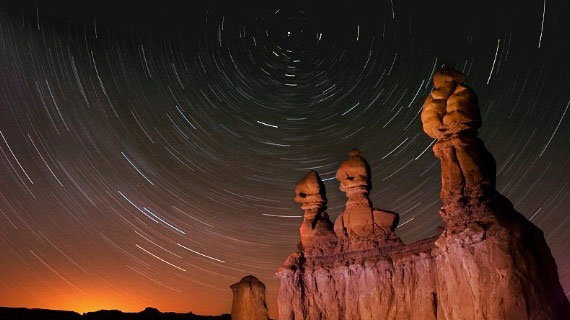
Goblin Valley State Park is unlike any other place in the world — and a place that captures and stretches the imagination, challenging you with its geologic whimsy. Free of any significant sources of light pollution, Goblin Valley is home to one of the clearest, darkest night skies in the world. Open daily until 10:00 p.m. and home to 24 campsites and two yurts for overnight guests.
This article was published more than 3 years ago and might contain outdated information or broken links. As a result, its accuracy cannot be guaranteed.
Tags: Cedar City Outdoors SUU Outdoors


